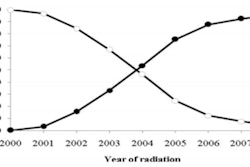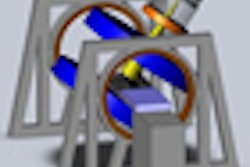Is the use of proton therapy for localized prostate cancer worth the cost? A national study of 30,000 men suggests it might not be. Findings were published online December 14 in the Journal of the National Cancer Institute.
The study determined that patients who received proton therapy had only a modest reduction in genitourinary toxicity six months after treatment compared to patients who underwent intensity-modulated radiation therapy (IMRT). There was no difference in toxicity levels between the two treatment groups a year after treatment, nor were there differences in gastrointestinal and other toxicities between the two groups at either six or 12 months following treatment.
Proponents of proton therapy suggest that this costly treatment is justified by the precise radiation dose it delivers directly to a tumor, exposing less healthy tissue to the detrimental effects of radiation and reducing the risk of toxicities. Standard treatments for men with prostate cancer such as radical prostatectomy and IMRT are known for causing adverse side effects such as incontinence and erectile dysfunction.
But exactly how do the toxicities generated by IMRT and proton therapy compare? Citing a "surprising lack of information about whether proton radiotherapy is actually superior to IMRT" with respect to toxicities as well as clinical outcomes, researchers at the Cancer Outcomes, Public Policy, and Effectiveness Research (COPPER) Center at the Yale School of Medicine decided to find out.
The researchers searched the Chronic Condition Warehouse, a comprehensive national database of Medicare fee-for-service claims for patients with specific chronic conditions. Using Medicare claims from 2008 and 2009, they identified a sample of early-stage prostate cancer patients, ages 66 to 94, who received either proton therapy or IMRT as their primary treatment.
A total of 27,647 patients were identified. Of these, 553 (2%) received proton therapy treatment. The researchers matched 421 patients who received proton therapy with 842 IMRT controls for the analysis of toxicity at six months. For the one-year analysis, 314 proton therapy patients were matched with 628 IMRT controls.
Patient characteristics included age, race, year of treatment, residence in a metropolitan county, median household income at the ZIP code level, and distance to the nearest of the six proton therapy facilities operating in the U.S. during the time frame of the study. The patients in each group were matched for sociodemographic characteristics, comorbidities, and androgen deprivation therapy use.
Although proton therapy was associated with a statistically significant reduction in genitourinary toxicity at six months compared to IMRT (5.9% versus 9.5%), at 12 months post-treatment genitourinary toxicity was comparable (18.8% versus 17.5%), reported lead author Dr. James Yu, associate professor of radiation oncology in Yale's department of therapeutic radiology, and colleagues.
The median reimbursement from Medicare was $32,428 for proton therapy and $18,575 for IMRT. Patients ages 66 to 69 were three times as likely to receive proton therapy, and Caucasian men were more than four times more likely than African-American patients to receive this treatment.



















